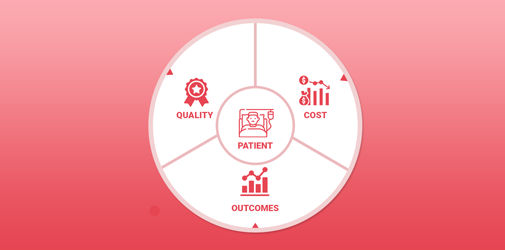ASHOK MUTTIN | JULY 19, 2021
Building a Cost, Quality and Outcome
Methodology: 6 Steps to Get Ready to CQO
Costs go up, reimbursements go down. You have to act fast to be sure your health system can keep healthy and delivering care to your communities.
Let’s get started with a quick quiz. How would you answer these questions?
- Are your surgical procedures are profitable?
- Do payer reimbursements cover all costs?
- Do reimbursements generate enough profit margin to support the organization overall?
- Which lines deliver the greatest outcomes to patients?
- Which lines deliver the greatest profit?
- Are there procedures or physicians that actually lose money?
Without visibility into accurate and timely analytics on supply costs, supply usage billing, reimbursements and patient outcomes, including complications and readmissions, you won’t actually know whether you’re making money on each procedure – or losing it.
Next, let’s look at the factors that impact your CQO:
- The supplies used in the case and their cost (as well as supplies that were picked for the case but returned to inventory or wasted)
- Total case cost (fixed and variable costs)
- Amount billed to the payer
- Reimbursement received
- Patient outcomes, including infections and readmissions
- Case revenue/profit (reimbursement less costs)
- Variation of direct and indirect costs per facility
Are you ready to get started?
SupplyCopia has built, tested and proven a methodology to help health systems get a real-world CQO initiative up and running. Here are 6 steps you need to start a successful CQO initiative:
1. Data collection and integration – Collect key data elements from your internal systems, including ERP, POU, cost accounting, quality, reimbursement and patient demographics. (Want to learn more? Check out the blog post “The CQO Data Dilemma.”)
2. Data enhancement to support aggregation and analysis – Good news. We’ve done this before, and have the methodology to cleanse, classify, code and enhance the data from each of your systems, so it’s able to be aggregated, analyzed and understood.
3. Data integration and analysis – We’ll create a bill of materials (BOM) that includes supplies used by each https://www.supplycopia.com in each case. We compare your BOM to standardized best practice BOM and identify any missed parts or leakages due to process gaps.Then, we perform a series of data integrations to link the supplies used with costs, reimbursements and patient outcomes.
4. Create supplier scorecards – With physician preference often driving product selection – and huge price variances among products – you’ll need the most relevant data to evaluate suppliers, based on actual costs and outcomes. We can help you and your surgical team tackle this step.
5. Develop composite scoring for surgeons – One of the most interesting pieces of this project, we’ve worked with surgical teams to create a methodology they embraced, creating a model that results in a composite score based on:
- Hospital acquired infections
- Length of stay
- Hospital readmission after 30-45-60 days
- Mortality
Based on our previous work, we’ve built a path that lets us conduct analysis on megasets of enhanced and aggregated data, considering key factors like number of procedures, cost per procedure, revenue/margin per procedure and others.
6. Create and present actionable insights – We bring it home. With your team, SupplyCopia creates a dashboard that presents the data and business intelligence you’ll need to “tune the dials” on CQO variables:
- Supply standardization
- Surgeon performance
- Physician preference cards
- Charge capture
- Supplier contracts
Ready to Improve Your Cost, Quality and Outcomes? Check out this new CQO case study.
Whether you’re leading a large health system, a standalone hospital or surgery center, SupplyCopia is your next step to finding hidden savings, increasing revenue, and improving decisions with business intelligence.
Start your journey to improved CQO today. To discuss your current state and next steps, reach out anytime — we’ll get right back with you to learn more and help you get started.
More from SupplyCopia



 ALL Solutions
ALL Solutions 
